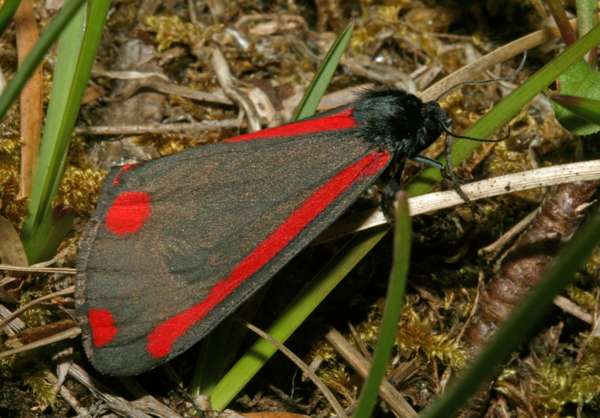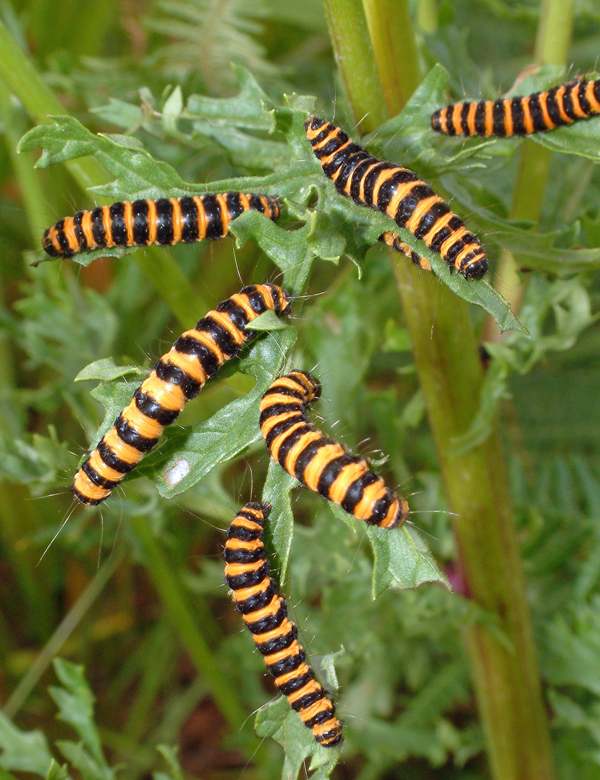Trees Birds Mammals Fish Amphibians Reptiles
Wild Algarve
Bookshop
Cinnabar Moth - Tyria jacobaea
Phylum: Arthropoda - Class: Insecta - Order: Lepidoptera - Family: Arctiidae

From a distance the Cinnabar Moth, a member of the Tiger Moth family, Arctiidae, could be confused with one of the many members of the family Zygaenidae, the burnet moths. Apart from the two spots on the trailing edge of the forewing, at rest it does somewhat resemble the (slightly smaller) Transparent Burnet Moth, Zygaena purpuralis; however, the clubbed antenae of burnet moths are a distinguishing feature.

The wingspan of the Cinnabar Moth ranges from 3.3 to 4.3cm.
The picture above, taken in southern England in early June 2014, was kindly contributed by Simon Harding. From this picture it is immediately apparent that the Cinnabar Moth does not have clubbed antennae.
Distribution
In Britain the Cinnabar Moth is widespread and common throughout southern and central England and Wales; further north in England and particularly in Scotland it becomes more confined to coastal areas, where the winter extremes of temperature are less severe.
Cinnabar Moths are also found throughout Europe and into Asia.
Lifecycle

The larval foodplants of the Cinnabar Moth are Common Ragwort, Senecio jacobaea, and other members of the Senecio genus including Marsh Ragwort, Senecio aquaticus, Oxford Ragwort, Senecio squalidus and occasionally also Groundsel, Senecio vulgaris. These are all poisonous plants, and as a result of the caterpillars (above) feeding on ragwort (in particular) and the resulting adult moths contain large amounts of toxins. It is reported that the bright colouring of the caterpillars and the moths (as is also said to be the case with the various burnet moths) acts as a warning to potential predators that these insects are poisonous.
The caterpillars of this species are yellowish orange with black radial hoop-like stripes and long hairs; their heads are also black. These gregarious caterpillars can strip a large ragwort plant back to a bare stem just in day or two.
Cinnabar Moths are not native to the USA or Australia and New Zealand, but they have been introduced to these regions as a biological control for ragwort, which can kill farm animals if they eat it.
In Britain the adults are on the wing from May until July; they tend to be nocturnal (unlike burnet moths which fly throughout the day) unless they are disturbed during the day. Caterpillars of the Cinnabar Moth can be seen in July and August; they then pupate on the ground and remain in that state through the winter months.
Acknowledgements
This page includes pictures kindly contributed by Rob Petley-Jones.
Studying butterflies and moths...